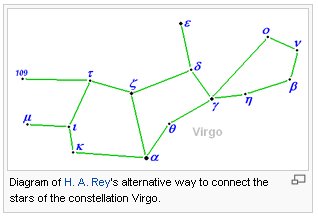Once again. I have read somewhere, but cannot recall where, how the C text was said to be a tablet for the women, an easy text. The rounded outline of the Mamari (Egg) tablet may have inspired such a thought. Furthermore, however, it has been stated (by Fischer) that the Mamari tablet was the only remaining tablet which certainly was predating the arrival of the missionaries. The Sun had 2 wives, one for the summer and one for the winter and the pair of great crescents could possibly refer to them:
In Cb4-20 there are twin curves at the top of the glyph, but in the corresponding G glyphs they are not twins, instead one of the openings is broader. I guess the broader opening represents the broad daylight from the summer Sun:
Gb3-30 is glyph 229 + 91 = 320 counted from the beginning of side a. Notably, though, it is also number 91 counted from the beginning of side b, i.e. the same number as for Cb4-20 when counted from the beginning of side b on the Mamari tablet. At the time of the Hyades Gate Gb3-30 could have been where Adhil (ξ Andromedae) rose with the Sun in February 4, i.e. in day 365 + 35 = 400. 35 + 64 = 99 (March 31) = 464 - 365 = *19 + 80. ... ξ, 4.9, is Adhil, first appearing in the Almagest of 1515, and again in the Alfonsine Tables of 1521, from Al Dhail, the Train of the Garment, the Arabic equivalent of Ptolemy's σύρμα; but Baily thought the title better applied to the slightly fainter A, which is more nearly in that part of the lady's dress; and Bayer erroneously gave it to the 6th-magnitude b, claiming - for he was somewhat of an astrologer - although the Os Protestantium of his day - that, with the surrounding stars, it partook of the nature of Venus ... Syrma (Σύρμα) - the Train of the Garment - was also a name for ι Virginis:
At the time of the Hyades Gate Syrma in Virgo was close to the Full Moon in February 18, the night after number 413 = 14 * 29½. It was also the 14th night after February 4 (400), when Σύρμα in Andromeda (Adhil) was close to the Sun. Halfway from February 4 to February 18 was February 11 (407) and according to my early reconstructions night number 407 came before Rogo, when in rongorongo times he was at 0h. Counting glyphs backwards from Ga1-1 at May 25 (*65) - including also my assumed zero night at May 24 (*64) - meant reaching glyph 408 at Gb6-26:
Possibly the summer maid was here depicted as a henua with a kind of growth in front (Gb6-27) and with the following winter maid (Gb6-28) as a barren land. ... Hamiora Pio once spoke as follows to the writer: 'Friend! Let me tell of the offspring of Tangaroa-akiukiu, whose two daughters were Hine-raumati (the Summer Maid - personified form of summer) and Hine-takurua (the Winter Maid - personification of winter), both of whom where taken to wife by the sun ... Now, these women had different homes. Hine-takurua lived with her elder Tangaroa (a sea being - origin and personified form of fish). Her labours were connected with Tangaroa - that is, with fish. Hine-raumati dwelt on land, where she cultivated food products, and attended to the taking of game and forest products, all such things connected with Tane ... The 'peanut twins' in Gb8-30 are 'covered up' (puo) and this idea could refer to a pair of hidden female organs of reproduction (yoni). The hiding garment (Al Ghafr) had a border, a syrma and its defining dates could have been as follows:
From the nakshatra nights of Adhil to the heliacal days of Syrma there were always 13 days - a consequence of my rule of adding 183 to the heliacal dates in order to reach the nakshatra dates. But as the Sun had 2 wives it seems reasonable to let a single heliacal day correspond to a pair of nakshatra nights, for instance:
|
|||||||||||||||||||||||||||||||||||||||||||||||||||||||||||||||||||||||||||||||||||||||||||||||||||||||||||||||||||||||||||||||||||||||||||||||||||||||||||||||||||||||||||||||||||||||||||||||||||||||||||||||||||||||||||||||||||||||||||||||||




